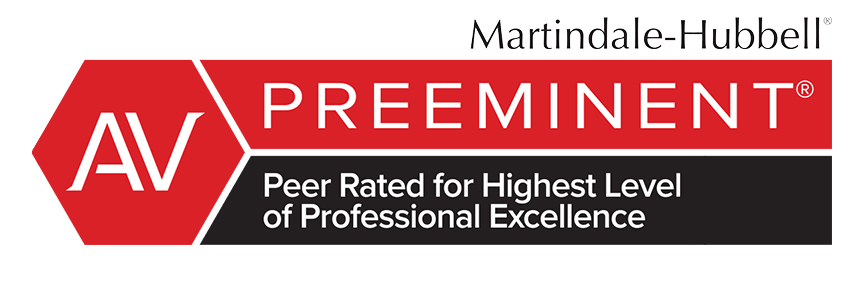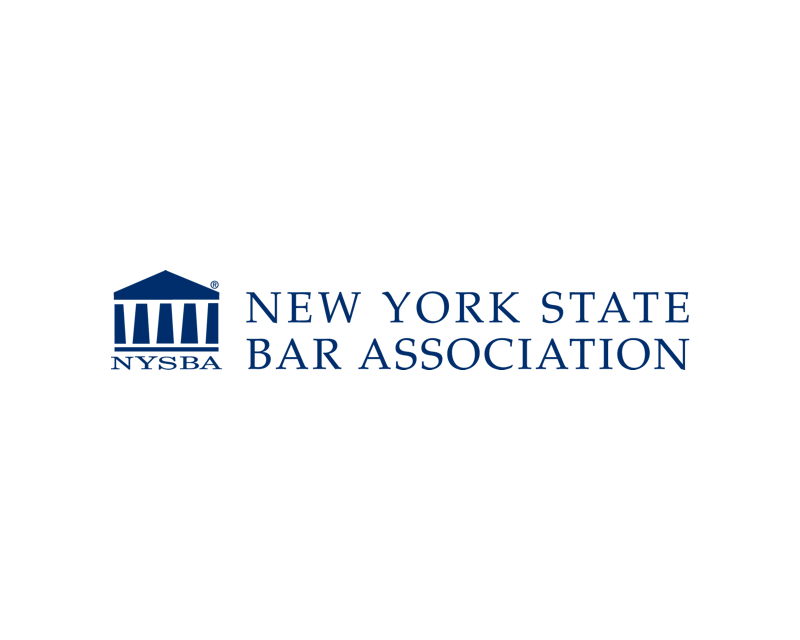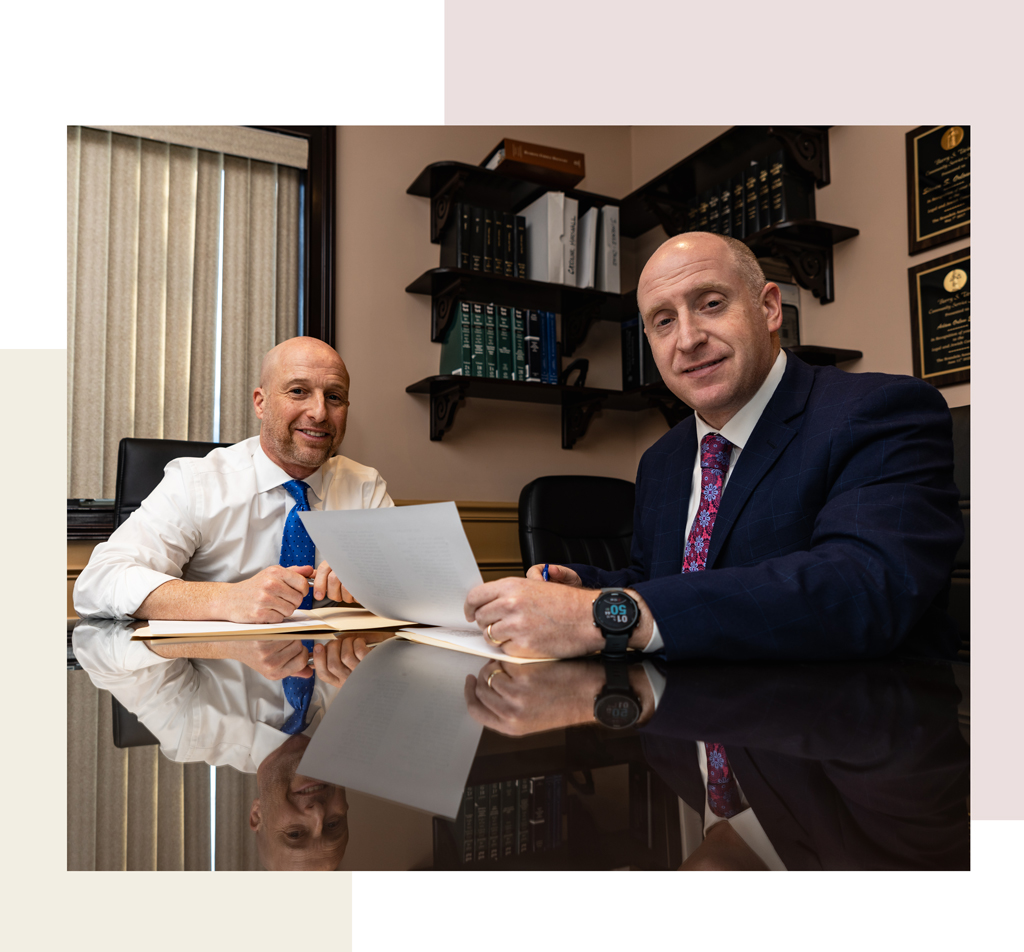Understanding Comparative Negligence in Personal Injury Cases in New York
If you’ve been involved in an accident in New York and are considering filing a personal injury claim, you may be wondering what is comparative negligence? What does it mean, and how can it impact your case? Comparative negligence is a legal principle that could influence the amount of compensation you receive. In New York, this principle is especially crucial to understand, as it directly affects how fault and financial responsibility are determined. Whether you’re dealing with a car accident, slip and fall, or any other type of personal injury case, understanding comparative negligence can make a significant difference in the outcome of your legal proceedings.
Key Takeaways
- Comparative negligence is a legal concept in New York that can impact the amount of compensation you may receive in a personal injury claim.
- Understanding how comparative negligence is calculated can help you better prepare for your case.
- Comparative negligence laws are specific to New York and differ from contributory negligence laws in other states.
- Call (646) 647-3398 For A Free Case Evaluation
Key Differences Between Comparative and Contributory Negligence in New York Personal Injury Cases
When it comes to personal injury cases, the terms “comparative negligence” and “contributory negligence” are often used, but they are not interchangeable. Each represents a different legal doctrine that states may adopt to handle negligence claims. New York follows the comparative negligence model, and understanding the key differences between the two can be vital for anyone involved in a personal injury case.
- Comparative Negligence: Under the comparative negligence model, each party’s degree of fault is calculated, and this proportion directly affects the amount of compensation they may receive. In New York, even if you are partially at fault for an accident, you can still recover damages. Your compensation will be reduced by the percentage of your fault. For example, if you were found to be 30% at fault in a car accident and were awarded $100,000, you would actually receive $70,000 after the 30% reduction.
- Contributory Negligence: On the other hand, contributory negligence operates under an “all or nothing” principle. In states that follow this model, if you are found to be even 1% at fault, you are barred from recovering any damages. This can be extremely harsh and often leads to unfair outcomes where victims get nothing even if they were only minimally responsible for the accident.
- Financial Consequences: In comparative negligence states like New York, the financial burden is often distributed more equitably among all parties involved, according to their level of responsibility. In contrast, contributory negligence states can result in one party shouldering all the financial consequences, even if they were only slightly at fault.
- Insurance Implications: Comparative negligence also affects how insurance claims are handled. In New York, insurance companies will assess the fault percentage to determine your claim’s value. In contributory negligence states, you may find it much more difficult to get any payout from an insurance company if you’re found to be even slightly at fault.
- Legal Strategies: In New York, legal strategies might focus on reducing your percentage of fault to maximize your compensation. In contributory negligence states, the emphasis is usually on proving that the plaintiff is completely fault-free, which can be a much higher hurdle to overcome.
Understanding the differences between comparative and contributory negligence is crucial for anyone involved in a personal injury case in New York. If you have more questions or need personalized guidance, call (646) 647-3398 for a free case evaluation.
How Comparative Negligence Affects Your Compensation
In New York, the principle of comparative negligence plays a significant role in determining your compensation in a personal injury case. Essentially, your level of fault is assessed as a percentage, and this percentage is then used to reduce your overall compensation. This ensures that you are only compensated for the portion of the accident for which you were not responsible.
Let’s say you’re involved in a slip and fall accident at a retail store and sustain injuries costing $50,000 in medical bills, lost wages, and other damages. After evaluating all the evidence, the court determines that the store was 80% at fault for not maintaining the premises properly, but you were 20% at fault for not paying attention to where you were walking.
In this scenario, your compensation of $50,000 would be reduced by your 20% fault. You’d receive 80% of $50,000, which equals $40,000. This system allows for a more nuanced allocation of fault and financial responsibility.
This percentage of fault doesn’t just apply to your interactions with the other party involved; it also impacts insurance claims. Insurance companies use your percentage of fault to calculate how much they are willing to pay out for a claim. If you’re found to be 30% at fault, expect your potential insurance payout to be reduced by that percentage.
This system makes it vital to collect as much evidence as possible to support your case. Photos, witness accounts, and expert testimony can all serve to reduce your percentage of fault and thus increase your final compensation. Legal representation can also be a significant factor in minimizing your fault percentage. An experienced personal injury attorney can build a strong case to prove that you were less at fault, helping you to secure the maximum possible compensation.
If you are facing a personal injury case in New York and are concerned about how comparative negligence might affect your claim, it’s crucial to consult with an experienced attorney. Call (646) 647-3398 for a free case evaluation.
How New York Courts Calculate Comparative Negligence
In New York, the process of calculating comparative negligence is a nuanced and multi-step procedure that involves both factual and legal evaluations. During a trial, both sides will present evidence and arguments to establish the degree of negligence attributable to each party. The jury or judge will then assess these factors and assign a percentage of fault to each involved party.
- Presentation of Evidence: Both parties will present evidence such as photographs, eyewitness testimony, expert opinions, and accident reports. This evidence aims to show who was at fault and to what degree.
- Legal Arguments: Attorneys for both sides will make legal arguments based on the evidence, trying to either minimize or maximize the comparative fault of the involved parties.
- Jury Instructions: If the case goes to trial, the judge will provide the jury with instructions on how to consider the laws and evidence pertaining to comparative negligence. The jury is then tasked with determining each party’s percentage of fault.
- Assigning Percentages: After evaluating all evidence and arguments, the jury or judge assigns a percentage of fault to each party. This percentage indicates how much each party’s negligence contributed to the accident and the resulting injuries.
- Adjustment of Damages: The final compensation is then calculated based on these percentages. If a plaintiff is awarded $100,000 in damages but is found to be 25% at fault, their compensation would be reduced to $75,000 (i.e., $100,000 minus 25%).
- Appeals: Either party has the right to appeal the court’s decision, including the calculated percentages of comparative negligence. An appeal would require a higher court to review the case, and there’s a chance that the percentages could be revised.
Understanding how comparative negligence is calculated in New York courts can offer you valuable insights into your personal injury case. It highlights the importance of gathering strong evidence and hiring a competent attorney to represent your interests. If you’re concerned about how comparative negligence might affect your compensation, don’t hesitate to call (646) 647-3398 for a free case evaluation.
The Role of Evidence in Proving Comparative Negligence
Evidence plays a pivotal role in establishing the degree of comparative negligence in New York personal injury cases. Given that your compensation may be reduced based on your percentage of fault, presenting strong evidence can help minimize your liability and maximize your payout. Here are some key types of evidence often used in these cases:
- Photographic and Video Evidence: Capturing the accident scene, your injuries, and any hazards or conditions that contributed to the accident can provide a visual account of what happened. These can be compelling when presented in court.
- Eyewitness Testimony: Witnesses can offer a third-party perspective on the accident, which can either support or undermine claims of comparative negligence.
- Expert Opinions: Specialists like accident reconstruction experts, medical experts, or occupational therapists can offer professional assessments that lend credibility to your case.
- Police and Accident Reports: Law enforcement reports often contain assessments of fault or describe conditions like weather or road conditions that could have contributed to the accident. These reports can be powerful pieces of evidence.
- Medical Records: These can help establish the severity of your injuries and by extension, the possible negligence of the other party involved. They can also show the duration and impact of your injuries, which can affect the overall compensation.
- Personal Testimony: Your own account of events, while subject to scrutiny, is also a form of evidence. However, be aware that this can be a double-edged sword if inconsistencies appear in your story.
- Records of Communication: Text messages, emails, or any other forms of communication between you and the other party or even witnesses can sometimes serve as evidence. They might contain admissions of guilt or other statements that could influence your degree of fault.
- Surveillance Footage: Cameras from traffic lights, businesses, or other sources may capture the incident and can provide unbiased evidence that can confirm or refute claims made by either party.
- Vehicle Data: In cases of car accidents, information extracted from the vehicles involved can indicate speed, direction, and other factors that could influence comparative negligence.
If you’re involved in a personal injury case in New York, gathering and presenting strong evidence can significantly impact how comparative negligence is applied and, ultimately, the amount of compensation you can recover. For a tailored evaluation of your case and trusted guidance, call (646) 647-3398 for a free case evaluation.
The Impact on Insurance Claims
Understanding comparative negligence is not only essential for court proceedings but also significantly affects how insurance claims are handled in New York. Insurance adjusters routinely consider comparative negligence when assessing the value of a claim. Here’s how it impacts your interaction with insurance companies:
- Initial Claim Assessment: Once you file a claim, insurance adjusters will conduct their investigation. They will consider police reports, witness statements, and other evidence to establish fault percentages, similar to a court of law.
- Negotiation Leverage: Knowing how comparative negligence works can provide you with better leverage when negotiating with insurance adjusters. Armed with the right evidence and a good understanding of New York’s comparative negligence laws, you can challenge any attempt by an insurance company to unfairly increase your percentage of fault.
- Claim Value: Your compensation from an insurance claim will be adjusted based on your percentage of fault. If the adjuster determines that you were 20% responsible for the accident, your compensation will be reduced by that percentage.
- Policy Renewals and Premiums: Your level of fault in an accident may also impact your insurance premiums and policy renewals. Being found at fault to a significant degree could result in higher premiums or even non-renewal of your policy.
- Subrogation: If your insurance company pays out your claim and then seeks to recover those costs from the other party’s insurance, the degree of your fault can impact the amount they are able to recover. This, in turn, might affect your future premiums and the insurer’s willingness to maintain your policy.
- Uninsured and Underinsured Motorist Claims: In these cases, your own insurance may have to cover your damages. Comparative negligence can also play a role here in determining how much of the claim your insurer will cover.
- Legal Assistance: Because insurance companies have their own interests at heart and are well-versed in the laws, having a knowledgeable personal injury attorney can be invaluable in navigating the complex issues surrounding comparative negligence in insurance claims.
In summary, comparative negligence is a vital concept to understand not only for your personal injury lawsuit but also for any related insurance claims. Knowing how it works can help you be better prepared and possibly receive a more favorable settlement. For more specific guidance tailored to your situation, call (646) 647-3398 for a free case evaluation.
How to Defend Against Claims of Comparative Negligence
If you’re involved in a personal injury case in New York, it’s almost certain that the concept of comparative negligence will come into play. The other party or their insurance company may attempt to place some of the blame on you to reduce their financial liability. Defending against these claims effectively can help you maximize your compensation. Here are some strategies to consider:
- Collect Comprehensive Evidence: The more evidence you can provide to establish the other party’s negligence or fault, the stronger your defense against any claims of comparative negligence. This includes photographs, eyewitness accounts, and expert testimony.
- Prompt Legal Representation: Consulting a personal injury attorney as soon as possible can provide you with insights into how to defend against claims of comparative negligence. An experienced lawyer can guide you through the legal process and help you build a strong case.
- Question Credibility: One effective way to defend against claims of comparative negligence is to question the credibility of the evidence presented by the other side. This can include scrutinizing witness testimonies, pointing out inconsistencies in their story, or challenging the qualifications of their experts.
- Establish Clear Causation: Show that the other party’s negligence was the primary or sole cause of the accident and resulting injuries. The clearer the causation, the less likely you’ll be found partially at fault.
- Counter with Contributory Factors: While establishing your case, point out other contributing factors like hazardous conditions or third-party involvement that could have contributed to the accident. This can help divert some of the blame placed on you.
- Leverage Precedents: Legal precedents set by similar cases can sometimes be used to defend against claims of comparative negligence. Your attorney can research such cases to find precedents that are favorable to your situation.
- Negotiate Assertively: With strong evidence and legal representation, you can negotiate more assertively with insurance adjusters or opposing counsel, making it less likely that you’ll have to accept a high percentage of fault.
- Be Prepared for Trial: Sometimes negotiations fail, and the case goes to trial. In such instances, being prepared to defend against comparative negligence in court is crucial. This involves having a well-structured case backed by strong evidence and expert testimonies.
- Documentation and Records: Keep all communication, bills, medical records, and other forms of documentation. These records can sometimes provide overlooked details that could help defend against claims of comparative negligence.
- Consult Medical Experts: Medical testimony can help correlate the extent of your injuries directly to the other party’s actions, diminishing your percentage of fault.
If you’re concerned about how to defend against claims of comparative negligence in a New York personal injury case, consulting an experienced attorney should be your first step. For personalized guidance tailored to your case, call (646) 647-3398 for a free case evaluation.
New York Laws and Legislation on Comparative Negligence
In New York, comparative negligence is governed by Article 14-A of the New York Civil Practice Law & Rules, specifically CPLR Section 1411. This legal framework outlines how the state handles negligence and liability in personal injury cases, allowing victims to recover damages even if they are partially at fault for their injuries. Here’s what you need to know about the laws and legislation:
- Pure Comparative Negligence: New York follows the rule of “pure comparative negligence.” This means that a victim can still recover damages even if they are found to be 99% at fault. However, their compensation will be reduced in proportion to their percentage of fault.
- Percentage of Fault: Under New York law, the judge or jury is responsible for determining each party’s percentage of fault after assessing all the evidence and arguments.
- Adjustment of Damages: Once the percentage of fault is established, the victim’s total compensation will be reduced accordingly. For example, if a victim was awarded $100,000 in damages but was found to be 30% at fault, they would receive $70,000.
- Joint and Several Liability: New York has modified its laws regarding joint and several liability. In some cases, defendants who are less than 50% at fault may only be responsible for non-economic damages proportional to their percentage of fault.
- Application Across Cases: The principles of comparative negligence in New York apply to various types of personal injury cases, including car accidents, slip and fall incidents, and medical malpractice, among others.
- Impact on Insurance: New York’s comparative negligence laws also affect how insurance companies handle claims. Insurers will generally perform their own assessments of fault and may try to use comparative negligence to reduce the claim amount.
- Legal Defenses: Defendants often use comparative negligence as a defense to either completely avoid or minimize their financial responsibilities. This makes it crucial for the plaintiff to provide strong evidence that minimizes their own degree of fault.
- Appeal Rights: The established percentages of fault can be appealed in higher courts, but this is generally a complex and time-consuming process that may or may not result in a more favorable outcome.
Understanding New York’s comparative negligence laws is crucial for anyone involved in a personal injury case in the state. These laws will not only determine your ability to claim compensation but also how much you’re likely to receive. If you’re uncertain about how New York’s comparative negligence laws apply to your case, consult an experienced attorney for personalized advice. Call (646) 647-3398 for a free case evaluation.
Statute of Limitations in Comparative Negligence Cases
In New York, the statute of limitations for personal injury cases, including those involving comparative negligence, is generally three years from the date of the accident. It’s crucial to be aware of these time limits for several reasons:
- Filing Deadline: Missing the deadline to file a lawsuit may result in losing the right to claim any compensation. Even if you’re partially at fault, you can still recover a portion of the damages under New York’s comparative negligence laws.
- Tolling Exceptions: In specific circumstances, such as if the victim is a minor or mentally incapacitated, the statute of limitations may be “tolled” or paused. However, these exceptions are limited and highly case-specific.
- Claim against Government Entities: If you’re filing a claim against a government entity, the statute of limitations is generally much shorter, often requiring notice within 90 days of the incident and filing a lawsuit within one year and 90 days.
- Insurance Claims: While the statute of limitations applies to lawsuits, insurance claims have their own deadlines that can be much shorter. Failure to promptly report the accident to the insurance company may compromise your claim.
- Evidence Preservation: The sooner you begin the legal process, the better the chances of preserving essential evidence to support your case. Over time, evidence may be lost, and witnesses’ memories may fade.
- Legal Strategy: Being aware of the statute of limitations can affect your legal strategy. If you’re approaching the deadline, you may have less time to gather evidence to counter claims of comparative negligence, potentially affecting your compensation.
- Settlement Negotiations: Knowing the statute of limitations can also impact settlement negotiations. As the deadline approaches, the other party might be less willing to negotiate, expecting that you’ll run out of time to file a lawsuit.
- Case Complexity: In more complex cases, such as medical malpractice or product liability where comparative negligence may also be a factor, different statutes of limitations may apply, and early consultation with an attorney is advised.
Understanding the statute of limitations and its impact on a comparative negligence case is critical for securing the compensation you deserve. For advice tailored to your specific case and to ensure you meet all legal deadlines, call (646) 647-3398 for a free case evaluation.
FAQs About Comparative Negligence
- What is Comparative Negligence?: Comparative negligence is a legal principle that allows a victim in a personal injury case to recover damages even if they are partially at fault for the accident. The amount of compensation is reduced based on the victim’s percentage of fault.
- How Does New York Apply Comparative Negligence?: New York uses a “pure” comparative negligence system. This means you can recover damages even if you’re 99% at fault, but your compensation will be reduced by your percentage of fault.
- How is Fault Determined?: In New York, the judge or jury will determine the percentage of fault for each party involved after reviewing all the evidence, including eyewitness accounts, photographs, and expert testimony.
- Can I Still File an Insurance Claim?: Yes, you can still file an insurance claim. However, insurance companies often have their own methods for determining fault and may use comparative negligence as a reason to reduce your settlement amount.
- What Types of Cases Does Comparative Negligence Apply to?: Comparative negligence can be a factor in various types of personal injury cases, including car accidents, slip and falls, and medical malpractice.
- How Does Comparative Negligence Affect My Compensation?: Your total awarded compensation will be reduced by your percentage of fault. For example, if you’re awarded $100,000 but are found to be 30% at fault, you’ll receive $70,000.
- What is the Statute of Limitations for These Cases?: The general statute of limitations for personal injury cases in New York is three years from the date of the accident. Certain exceptions and different timeframes apply to claims against government entities.
- How Can I Defend Against Comparative Negligence Claims?: Collect strong evidence, consult a personal injury lawyer, and consider legal strategies that can help you minimize or nullify claims of comparative negligence against you.
- What is Joint and Several Liability?: In New York, joint and several liability may apply, meaning multiple defendants could be held responsible for the full amount of damages. However, in certain cases, a defendant who is less than 50% at fault may only be responsible for non-economic damages in proportion to their fault.
- Why Do I Need an Attorney?: An experienced personal injury attorney can guide you through the complexities of comparative negligence laws, help you collect evidence, and represent you in negotiations or in court to maximize your compensation.
If you have more questions about how comparative negligence could impact your personal injury claim in New York, call (646) 647-3398 for a free case evaluation.
How The Orlow Firm Can Help Maximize Your Case
When it comes to navigating the complexities of comparative negligence laws in New York, The Orlow Firm stands as a formidable advocate for victims seeking justice and compensation. Here’s how we can make a significant difference in your case:
- Knowledgeable Legal Advice: Our team of experienced personal injury lawyers provides personalized legal counsel, ensuring you understand how New York’s comparative negligence laws apply to your unique situation.
- Strong Evidence Collection: We conduct a thorough investigation to gather all relevant evidence, from accident reports and medical records to eyewitness accounts and expert testimonies, to build a compelling case in your favor.
- Skilled Negotiation: Armed with evidence and experience, we negotiate aggressively with insurance companies and opposing lawyers to ensure you get the fair settlement you deserve, taking into account New York’s specific comparative negligence rules.
- Court Representation: If a fair settlement cannot be reached, our lawyers are prepared to represent you in court, fighting diligently to minimize your fault percentage and maximize your compensation.
- Joint and Several Liability: We will explore all avenues to identify multiple liable parties, where applicable, to further bolster your claim and potentially increase your compensation under New York’s joint and several liability laws.
- Financial Analysis: Our team will conduct a detailed analysis of your damages, including medical expenses, lost wages, and pain and suffering, to determine the full scope of your deserved compensation.
- Statute of Limitations: We ensure that all necessary legal procedures are conducted within the required timeframe, protecting your right to pursue a claim.
- Appeals and Legal Strategy: If necessary, we are prepared to file appeals or implement other legal strategies to contest any unfavorable decisions, always with the goal of securing the best possible outcome for you.
- Transparent Communication: Throughout the process, we maintain open lines of communication, keeping you informed and involved in all important decisions regarding your case.
- No Win, No Fee: We operate on a contingency fee basis, meaning you pay nothing unless we successfully recover compensation on your behalf.
When you choose The Orlow Firm, you’re not just getting a lawyer; you’re gaining a dedicated team committed to fighting for your rights and maximizing your compensation under New York’s comparative negligence laws. Call (646) 647-3398 for a free case evaluation.










